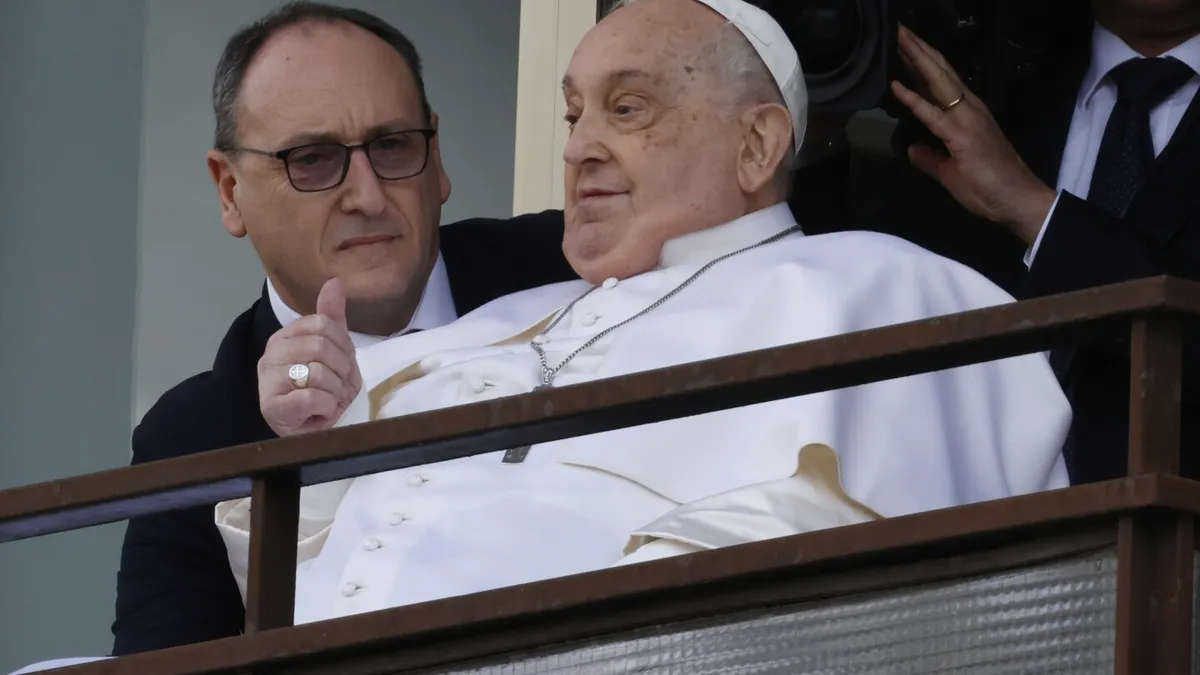
ROME — Pope Francis made his much-anticipated return to the Vatican on Sunday after an extensive hospitalization lasting five weeks due to a serious bout of pneumonia. At the age of 88, the pope faced two critical health crises during his stay in the hospital. However, by the fourth week, medical professionals confirmed that he was no longer in critical condition, allowing him to continue his recovery at the Vatican.
Here are the significant milestones from Pope Francis' longest hospital stay during his 12-year papacy, as reported by the Vatican:
Pope Francis was admitted to the hospital with symptoms of bronchitis and a slight fever shortly after a morning filled with audiences. Doctors diagnosed him with a respiratory tract infection.
During his hospitalization, the pope was diagnosed with a polymicrobial infection affecting his respiratory system, which included bacterial, viral, and fungal elements. This diagnosis marked a significant setback in his recovery.
An X-ray revealed that Pope Francis had developed pneumonia in both lungs, further complicating his condition. Doctors confirmed that he would begin treatment with cortisone and antibiotics.
At a news conference, the pope's medical team stated that he remained in critical condition but was not in imminent danger. They informed the public that he had developed steroid-induced diabetes as a side effect of his treatment, emphasizing a guarded prognosis.
In a concerning development, the pope experienced a respiratory crisis that necessitated high-pressure oxygen support through nasal tubes. Additionally, he received two blood transfusions due to anemia and a low platelet count.
Doctors reported a further complication as the pope entered the early stages of kidney failure. Although he did not experience a repeat of the respiratory crisis, he remained in critical condition.
In a positive turn, the mild renal failure showed signs of regression, indicating an improvement in his overall health.
During this period, the pope suffered an isolated coughing spasm, leading to aspiration of vomit, which required noninvasive medical intervention. He was placed on a mechanical ventilation mask for supplemental oxygen, though his prognosis remained guarded.
Pope Francis experienced two acute episodes of bronchospasm that required bronchoscopies to clear mucus blockages. Remarkably, he stayed alert and cooperative during the procedures.
In a heartfelt gesture, Pope Francis recorded an audio message broadcasted to the faithful in St. Peter’s Square, expressing gratitude for their prayers, despite his weak voice and shortness of breath.
Medical professionals announced that Pope Francis was no longer in immediate danger of death due to pneumonia, although he remained hospitalized for further treatment.
A chest X-ray confirmed an improvement in the pope's condition, which was a hopeful sign for his recovery.
Pope Francis celebrated the 12th anniversary of his papacy from his hospital bed, receiving a cake and hundreds of messages filled with well-wishes.
Marking one month in the hospital, the Vatican announced a reduction in medical bulletins, indicating the pope's ongoing recovery.
The Vatican released the first photograph of Pope Francis during his hospitalization, showing him seated in front of the altar in the private chapel of Gemelli hospital, without any visible breathing tubes.
Doctors shared that Pope Francis would be discharged from the hospital the following day. They recommended a period of convalescence lasting at least two months, during which he was advised against meeting large groups.
Pope Francis' return to the Vatican marks a significant moment in his health journey, and the Vatican community and the faithful around the world are rejoicing at his recovery. His experience serves as a reminder of the importance of health and compassion in leadership.